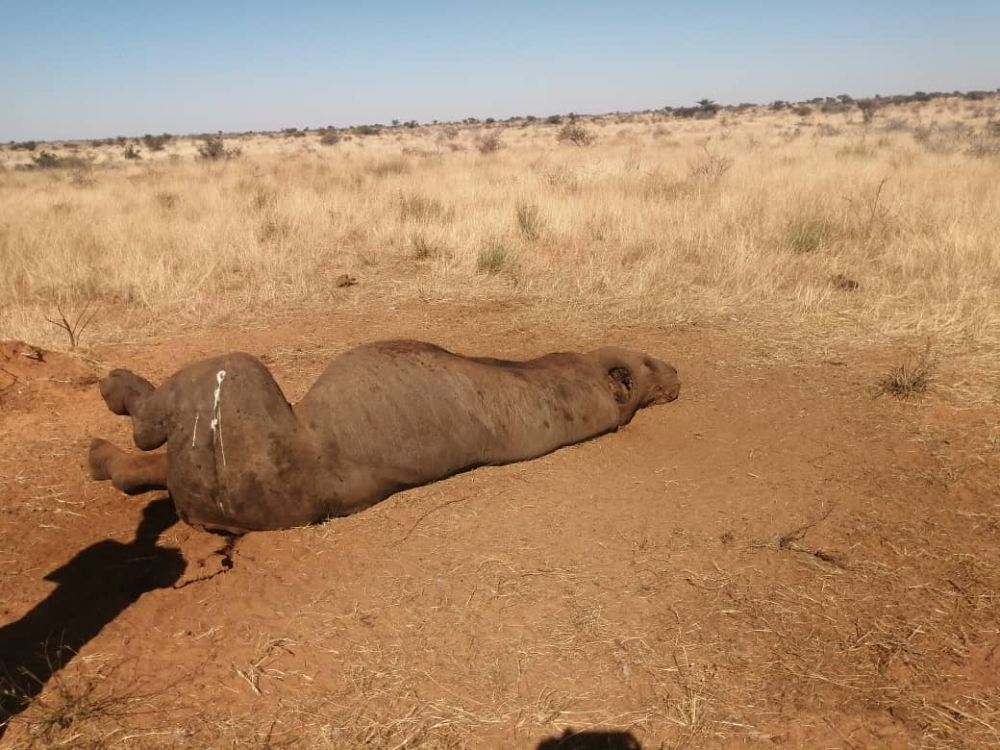Wildlife protection gaps identified
Boost capacity
New strategy aimed at defining common approaches for the protection and conservation of wildlife and to ensure the effective enforcement of laws governing wildlife resources in Namibia.
There is a need for improved budget allocations for the operational costs, equipment and materials needed to address wildlife crime in Namibia.
This is just one of the gaps highlighted in the Revised National Strategy on Wildlife Protection for 2021 to 2025.
Colgar Sikopo, the deputy executive director for natural resources management in the environment ministry, highlighted the gaps and achievements of Namibia’s wildlife protection strategy at the recently held national stakeholder forum on wildlife crime and law enforcement.
He said the strategy’s aim is to define common approaches for the protection and conservation of wildlife and to ensure the effective enforcement of laws governing wildlife resources in Namibia.
The strategy outlines eleven strategic programme areas that define the approaches and key interventions, summed up in a five-year action plan.
The action plan guides the activities of the ministry and its partners and serves as a monitoring tool.
More capacity
Among the issues that need to be addressed are capacity, Sikopo said.
He said the wildlife protection division in the ministry has been tasked to carry out anti-poaching patrols and law enforcement actions.
To date, 85 staff have been appointed – 10 to the intelligence and investigating unit.
Further, 36 wildlife protection service rangers completed their basic ranger training this year. However there is a need to increase the number and skills of rangers.
In terms of the dog units, the Etosha unit is staffed with nine dogs and 11 handlers, while the Bwabwata National Park dogs are in training.
A third unit has to be established for the central and southern regions and international entry points such as ports and airports, he said.
The operational term for the Blue Rhino Task Team has been extended to 2025 and support is provided through international donors.
“The task team has significantly improved the national capacity to investigate and prosecute cases based on collected intelligence and evidence.”
Tackle poachers
With regards to the protection of rhinos within protected areas, Sikopo said the management plan is being finalised and approved, while a dehorning strategy is under discussion.
The Waterberg Plateau Park has been equipped with a camera system, and the same is planned for the Etosha and Mangetti parks.
He said there is a need to develop security plans for rhinos on communal land, based on the national management plan.
Moreover, in terms of protecting elephants, a scientific research project, to establish a DNA ivory data bank, has been proposed for Namibia. Further, there is a need for a plane to stationed to oversee the north-eastern parks
There is also much work still to be undertaken to understand pangolin trafficking and rescues.
[email protected]
This is just one of the gaps highlighted in the Revised National Strategy on Wildlife Protection for 2021 to 2025.
Colgar Sikopo, the deputy executive director for natural resources management in the environment ministry, highlighted the gaps and achievements of Namibia’s wildlife protection strategy at the recently held national stakeholder forum on wildlife crime and law enforcement.
He said the strategy’s aim is to define common approaches for the protection and conservation of wildlife and to ensure the effective enforcement of laws governing wildlife resources in Namibia.
The strategy outlines eleven strategic programme areas that define the approaches and key interventions, summed up in a five-year action plan.
The action plan guides the activities of the ministry and its partners and serves as a monitoring tool.
More capacity
Among the issues that need to be addressed are capacity, Sikopo said.
He said the wildlife protection division in the ministry has been tasked to carry out anti-poaching patrols and law enforcement actions.
To date, 85 staff have been appointed – 10 to the intelligence and investigating unit.
Further, 36 wildlife protection service rangers completed their basic ranger training this year. However there is a need to increase the number and skills of rangers.
In terms of the dog units, the Etosha unit is staffed with nine dogs and 11 handlers, while the Bwabwata National Park dogs are in training.
A third unit has to be established for the central and southern regions and international entry points such as ports and airports, he said.
The operational term for the Blue Rhino Task Team has been extended to 2025 and support is provided through international donors.
“The task team has significantly improved the national capacity to investigate and prosecute cases based on collected intelligence and evidence.”
Tackle poachers
With regards to the protection of rhinos within protected areas, Sikopo said the management plan is being finalised and approved, while a dehorning strategy is under discussion.
The Waterberg Plateau Park has been equipped with a camera system, and the same is planned for the Etosha and Mangetti parks.
He said there is a need to develop security plans for rhinos on communal land, based on the national management plan.
Moreover, in terms of protecting elephants, a scientific research project, to establish a DNA ivory data bank, has been proposed for Namibia. Further, there is a need for a plane to stationed to oversee the north-eastern parks
There is also much work still to be undertaken to understand pangolin trafficking and rescues.
[email protected]





Comments
Namibian Sun
No comments have been left on this article